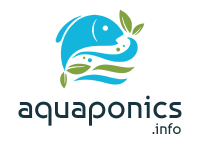Aquaponics advantages
Aquaponics future farms are not that far away from becoming ubiquitous present farms. But, they need to be nudged more into the public’s eye to make this happen. However, there is no point in selling an idea if it has no real, useful benefits. Eventually, people will see the weaknesses and either ignore them or reject them. This is the reason for this little piece of information.
With the current use of freshwater in farming, the frivolous use of it, and the waste created by human activity and abuse that is tainting our waterways, fresh drinking water is becoming scarcer. In fact, some countries have a huge problem with obtaining it and are turning to expensive technologies to both process it and preserve it.
This is where the aquaponics future farming option presents a viable and hugely beneficial solution.
What does this list look like?:
- It can be located near consumers and can eliminate unnecessary long-distance transportation (food miles)
- Carbon emissions are kept to a minimum
- Processing and packaging to protect foodstuff from handling and transportation is minimal or unnecessary
- It provides the freshest nutritious food directly to your family and community
- It uses a tenth of water consumption than soil-based agriculture
- It uses a third of the land on fallow, unfit, or unused ground
- It has no impact on the ecosystem since it does not need to clear land for farming
- It uses no soil and therefore cannot taint it, or deplete it, or make it a desert
- It provides an air filtration and oxygen-producing environment
- It is a fully controllable enclosed natural eco-system
- It can be monitored and optimized with electronic technology
- It uses no harmful pesticides and fertilizers
- Needs no genetic modification to produce pest-resistant food
- It provides natural compost for soil replenishment
- It produces significant amounts of pesticide-free fodder for livestock
- It is a sustainable hormone and antibiotic-free freshwater fish farm
- Fish produces significant amounts of solid and liquid nutrient-rich fish manure
- It is a valuable, sustainable, and easy source or worms (a worm farm)
- It is an eco-friendly business contributing to the well-being of our planet its people and the animals that inhabit it.
- It provides local jobs to the community
- It required far less labor to harvest the produce
- It provides the laborers with indoor work, protected from the elements, and often backbreaking harvest practices
- It produces a very wide variety of untainted green and fruiting plant foods, rich in natural nutrients
- It is not organic in the legal sense (planted in pesticide and fertilizer-free soil) but is in fact very much so in every other respect.
- It is a hub of education in sustainable healthy food production and practices
- It is responsible, sustainable, and bountiful in every respect
Food Systems – Currently
There is no question that food systems currently are producing vast amounts of foodstuff, to the point that much is being thrown away. That is not only a massive waste of energy and resources but shameful in every respect. It is beyond reason or even belief that such irresponsible use of our massive capacity to feed people worldwide is being thrown away or filling landfills. Many are the factors that contribute to this and chief among them is the economy of supply and demand. It is not easy for huge companies and conglomerates to be quick to change, adjust, or be flexible. Thus, we have the current affliction of hyper-consumerism eating away at our planet.
Not even 100 years ago, people either grew their own food or knew the farmer who grew it and provided it. In the meanwhile, smaller local farms have been virtually wiped out by the industrial and corporate-controlled food systems destroying our natural resources in the process. They have done so in the name of “feeding the masses”. What we consumers are becoming more aware of since the information age is that they have depleted our soils, sprayed toxic chemicals, and genetically modified our food.
We also know that a huge percentage of that food can travel across continents and oceans from its origin. Adding to this is an unbelievable amount of effort, processing, packaging, energy, and carbon emissions that contribute to distributing food to consumers on a global scale. This otherwise “healthy” food, vegetables, and greens have lost much of their nutritional value by the time they get to our plate.
Commercial agriculture is the single largest consumer of water worldwide. Wasteful practices for the few are not helping either (golf courses use copious amounts of fresh drinking water). If that wasn’t enough, our current food distribution systems emit up to 17 times more CO2 than local and regional food production. It is time to change. It is not enough to just talk about saving the planet, because what we actually mean is saving our lifestyle. There are many things that can be done to preserve what we have now, but we also have to begin now!
Aquaponics future farms may not be the only or major means of doing so, but they do present a solid, viable alternative to our wasteful and often shameful current practices.

